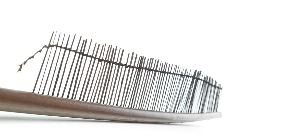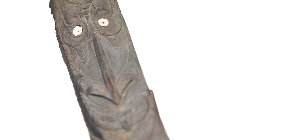According to a 2013 study, physical size is one of the most important criteria in choosing a partner. Moreover, the study showed that there was an ideal size ratio between the partners: 1:1.09. This ideal is supposed to be instinctively rooted in human beings.1 The classical image is of a man who can carry his wife over the threshold. The man protects the woman. The woman, on the other hand, looks up to her husband and feels that she and her children are well provided for and looked after. Apparently, even emancipatory movements have not been able to change much in this perception. Is it a primal instinct of women to seek a partner who is able to protect the family from other men? Would a bigger woman be more independent from her partner? The effects on the classical nuclear family – father, mother, children – as we have known it since the eighteenth century would be enormous. The first study of this phenomenon, in which female mammals are bigger than the males, took place only in 1976.2 And yet it would be an advantage for human beings, too, in terms of birth and childcare, if women were on average bigger than men. But then the image of the big, strong man would be obsolete.












































